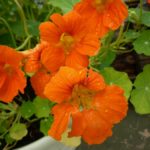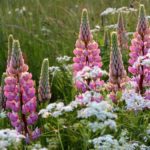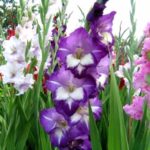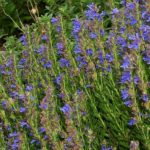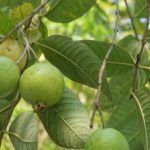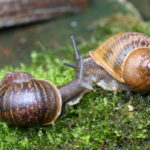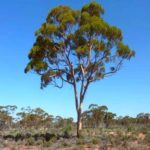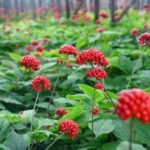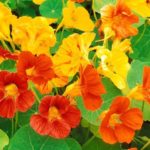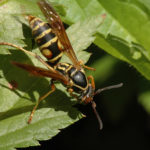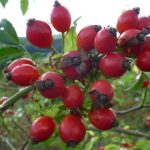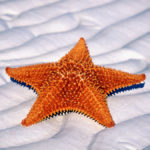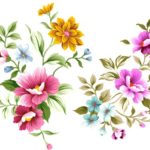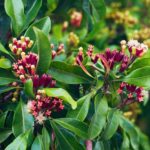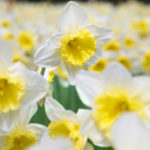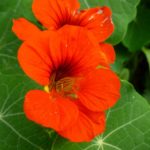Alissum – Types, Landing and care
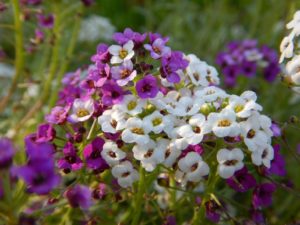 Fans of growing fragrant flowers at home will surely appreciate alissum. It is also called alyssum or marine lobularia. Alyssum is appreciated not only for the aroma, but more for the fact that it is extremely unpretentious. Literally took the seeds, planted in the ground, watered – and you’re done. It can be either annual or perennial. This plant is sprawling, branching, and small in height – from 20 to 40 cm. Alissum blooms in May, the process continues until late autumn.
Fans of growing fragrant flowers at home will surely appreciate alissum. It is also called alyssum or marine lobularia. Alyssum is appreciated not only for the aroma, but more for the fact that it is extremely unpretentious. Literally took the seeds, planted in the ground, watered – and you’re done. It can be either annual or perennial. This plant is sprawling, branching, and small in height – from 20 to 40 cm. Alissum blooms in May, the process continues until late autumn.
Types of Alissum
Professional gardeners distinguish two main types of alissum – this is sea alissum and rocky alissum. The marine species refers to annual plants, low, up to 20 cm, with small rosettes. Afraid of low temperatures. It blooms from May to frost with pink, white or blue flowers. After cutting, it grows several times. There are several varieties of this plant, such as: Tim Tim, Salmon, New Apricot and Pallet.
The rocky view is different from its relative. This is a perennial plant, quite tall, 30 cm and above. The rocky alissum is noteworthy not only flowers, but also leaves, of unusual shape and color, with a gray tint. By the way, leaves sometimes remain on stems even in winter. Rock alissum blooms with yellow flowers collected in panicles. The flowering period is short – from April to May. This species also has several varieties. These are the Plenum, the Compactum, the Citrinum, and the Golden Wave.
Landing and care
You need to start landing a beetroot in early summer. During this period night frosts are excluded. Planting alissum is extremely simple – sprinkle the seeds on the prepared soil and press it with your hand. They do not even need to be covered with earth – for germination they need sunlight.
To “save time” and speed up the flowering of alissum, you can plant it with already prepared seedlings, which begin to be prepared in late February – early March. Seedlings are grown in separate soil, loose and wet. To do this, there are special boxes or “cassettes”. Seeds are poured onto the ground in the same way, pressed by hand and watered. Seedlings will germinate for about two months under the film in a warm and bright place. By the way, you will see seedlings rather quickly – in a week. At this time, they are actively growing and they need a lot of light and heat, so it will not be superfluous to add artificial lighting to them. As for the temperature – it is advisable to keep it at about +12 degrees. You need to water a little. When the bushes grow, just at the beginning of summer, they are planted in the ground, at a distance of just over 10 cm.
There is another way to enjoy the flowers of alissum immediately with the first rays of the summer sun – this is planting the plant for the winter. Of course, the conditions of “light and heat” must be observed. During the winter, alissum will grow up and the flowers will appear almost immediately when you plant it in the open ground.
As for care – this, as already mentioned, is one of the most unpretentious plants. The only thing he needs is a timely haircut. In spring, before flowering, it should be freed from dry and broken twigs, last year’s flower stalks. Pruning is done after the active flowering season, in late summer. Often this leads to the fact that in September the alyssum blooms again.
Alyssum is one of those plants that love constantly moist soil. But watering needs a measure. If you overfill the plant, it will lose flowers. And too wet soil will lead to the death of the flower.
Like any pet, alissum can get sick. Of the diseases, brown rot is known – it affects the roots, powdery mildew, viral mosaic, jaundice of asters and wilting. Root cervix also belongs to root diseases. Many pests, for example, caterpillars, moths, whites, are also not indifferent to this flower. To deal with them, standard tools that are purchased in suitable stores or in markets are suitable.
The worst enemy of the beetroot is the cruciferous flea. Experienced gardeners come up with various means to scare off this pest. In particular, a weak solution of vinegar. It is noteworthy that the flea destroys young plants that are not recommended to be watered abundantly. And when the plant is already strong and growing, water becomes larger and the flea recedes.
In the home garden, alissum is planted in the same way – seeds in the amount of 5-7 pieces per pot, spill out onto the surface of the earth. Alyssum differs from other domestic plants in that it does not need to be fertilized. From this, he will begin to give abundant greens, and, on the contrary, there will be fewer flowers. By the way, so that your home flowerbed looks well-groomed, often replace the old plant – 3-5 years old with a new one. The adult alissum bush becomes woody and loses its decorative appearance.
